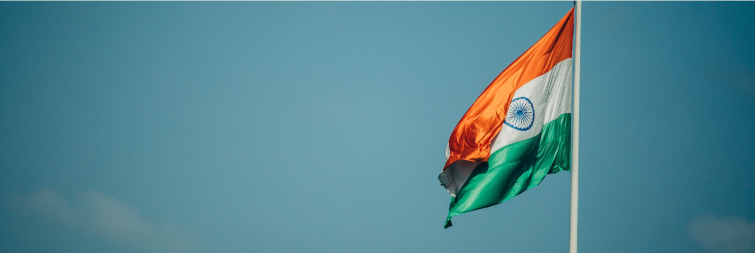India has finally succeeded!

The bad streak of the non-Chinese world was finally broken on August 23 by India’s Chandrayaan 3, or in translation “moon vehicle”. Chandrayaan was India’s third Moon mission!
Mission 1 successfully reached the Moon, entered its orbit and separated the probe for a controlled descent to the surface. In 2019, Chandrayaan 2 unsuccessfully tried to land on the surface, but the Indians did not give up, but after only four years they returned again and succeeded.
India is now the fourth power to successfully land a spacecraft on our natural satellite. On the same day, the rover went down the tracks carried by the lander to the surface and began its research.

The rover with six wheels, weighing 26 kg, has the task of measuring the composition of the surface, examining the presence of water ice in the crust as well as the evolution of the atmosphere. The Indians are new to driving a rover on a celestial body, and this success will be essential for their further progress. The rover has a temperature probe that can penetrate up to 10 cm deep into the lunar surface.
Already in the first days of the rover’s operation, a surprising observation happened: instead of the expected 20-30 degrees, the surface was much warmer, around 70 degrees Celsius. The surface of the Moon normally has extreme temperature fluctuations, it goes up to +120 C during the day and -130 C at night.
Did you know?
India’s missions are also the cheapest space exploration projects. In particular, Chandrayaan 3 cost some 74 million dollars.
Even more impressive in terms of budget was their mission to Mars, the Mangalian spacecraft, which successfully entered the orbit of Mars in 2014 and cost even a little less than Chandrayaan.

By comparison, the Hollywood film “Gravity” had a budget of $100 million, “Interstellar” about $165 million, and “The Martian” about $108 million. It is cheaper to go to Mars or land on the Moon performed by Indian engineers than to make a movie about it produced by Hollywood…
Much lower labor costs, extremely long working days of engineers and scientists (18 to 20 hours a day), domestic technology, simpler design and less complicated technical solutions make the difference compared to NASA’s projects.
Three more missions until the end of this year
But fear not because that’s not the end of the trip to the Moon for this year.
The Japanese space agency JAXA was scheduled to launch its lander SLIM, but the launch was delayed due to worsening weather conditions.

At the end of the year, two American missions are expected: one is the result of the collaboration between NASA and the private company Intuitive Machines, and the other is also from NASA and the company Astrobotic Technology.
It is possible that at least one of them will be extended for next year, but that does not change the fact that interest in the Moon is at the highest since the 70s of the last century!

